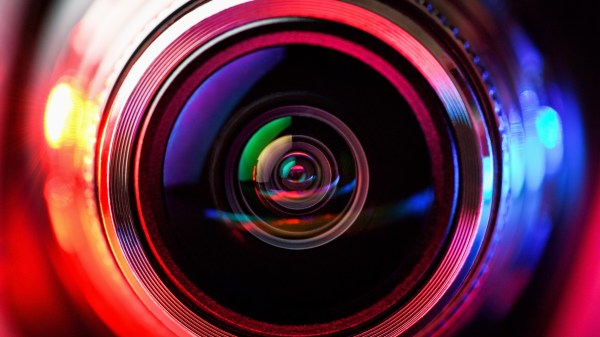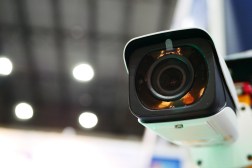RealNetworks offers free facial recognition software for K-12
As of the end of June, there had been more than 20 mass shootings at U.S. schools in 2018. Children in preschool are now participating in active shooter drills, while older children have been doing them their entire school lives. Parents, teachers and administrators agonize over what steps they can take to ensure students’ safety. Technology companies, meanwhile, are looking at ways they can help prevent deadly incidents.
RealNetworks, the Seattle-based online streaming company, wants to give schools a more effective way to identify who comes into a school building each day, so it’s offering its SAFR for K-12 facial recognition software free to individual schools throughout the United States and Canada.
“As parents, we see what’s happening around school safety. How do we make a contribution? We’re technologists who understand technology — how can we make an impact?” Rob Glaser, CEO of RealNetworks, told EdScoop. “Schools don’t necessarily have a lot of budget for technology. We didn’t want that to be a barrier.”
The software works with existing IP-based security cameras and readily available hardware, such as laptops or tablets. Each school decides its own policy for who can — or should, or must — participate. For example, one of the pilot schools, the University Child Development School (UCDS) in Seattle, decided to use the software on parents and other adults but does not permit anyone under age 15 to be entered into the system.
For security, photo images are converted into “signatures” by an algorithm in the software; the signatures, not the photos, are encrypted and stored on the school’s own server.
“There are thousands of parameters that define a face,” Glaser explained, so every person’s image signature is unique. “It’s not a representation of your face that any other system would understand.”
An eye on the adults
The company ran a pilot program at UCDS to control gate access, using the registered faces of parents, guardians and staff.
Paula Smith, head of UCDS, told EdScoop that her school is located in a dense urban part of Seattle, in an area that has been designated for more intense development, with buildings up to 24 stories.
“We felt we needed to create a locked campus. After the students arrive, you have to get buzzed in,” Smith said. “So we put in gates. Then we were approached by someone in our community about participating in the pilot.”
UCDS is a small school — 325 children in preschool through 5th grade — so the receptionists in the school’s two buildings know all the parents and caregivers and were responsible for looking at the security camera’s view when someone buzzed for admission. The problem was, Smith explained, the receptionists have other responsibilities and couldn’t always respond promptly when someone wanted to come in.
UCDS set up the RealNetworks system as an opt-in; parents and caregivers had to make the positive choice to participate. “This is not being used with kids. No one younger than 15 can enter their face into the system,” Smith said. About a third of the parents signed up.
“We didn’t have a lot of pushback … The [parents] who immediately opted in have really appreciated it,” she said.
The process is simple. An adult uses an iPad kiosk in the lobby to enter their information and have their picture taken. Once it’s done and the image signature is stored in the school’s server, the adult can approach the locked front gate, look up at the camera, and within milliseconds the gate will unlock.
‘Accurate understanding’
The state of Wyoming is evaluating SAFR as a way to strengthen access management strategy for schools.
“Wyoming has a history of being at the forefront of technological evolutions. Whether it’s our investment in statewide high-speed broadband networks, IT infrastructure supporting our education facilities and state infrastructure, or our connected vehicles program,” State CIO Tony Young said in a statement. “More recently, our rapid iterations with the RealNetworks team have been exciting. SAFR provides the opportunity to utilize existing camera systems to intelligently scale and achieve an accurate understanding of who’s entering a school campus.”
There is a growing resistance to facial recognition being used in areas such as law enforcement. The New York Civil Liberties Union, for example, is alarmed by the Lockport School District’s plan to use facial recognition and surveillance systems throughout the western New York school system; unlike UCDS, the schools will be tracking “students as young as 4 or 5,” NYCLU said in a blog post.
Some corporations, too, are uneasy about the potential for misuse. Microsoft president Brad Smith, for instance, just published a blog post calling for government regulation and corporate responsibility over the deployment and use of facial recognition.
Glaser agrees with that idea.
“We’re very supportive of having government regulation of the ‘rules of the road’ regarding how these systems should be deployed,” he said. “I think there are compatible ways to increase safety w/o infringing on privacy. [W]e think we’ve created a good down payment on a use case that’s socially positive.”
Glaser said that RealNetworks — known as one of the pioneering companies of streaming online media since the 1990s — is offering the free SAFR software to individual K-12 public, private and charter schools.
In the fall the company will introduce a commercial version of SAFR intended for entire school systems, where more centralized monitoring and control might be desired, and for other kinds of school use cases, such as football stadiums. The commercial product will come with technical support and a set of products for managing a system-wide installation, he said.
In the meantime, “We found ‘free’ is a really powerful way to bring something to market,” Glaser said. “We think it will be good for society … Maybe we don’t make a lot of money in the school sector, [but] we get brand recognition and goodwill.”
Reach the reporter at pwaitster@gmail.com and follow her on Twitter @edscoop_news .




